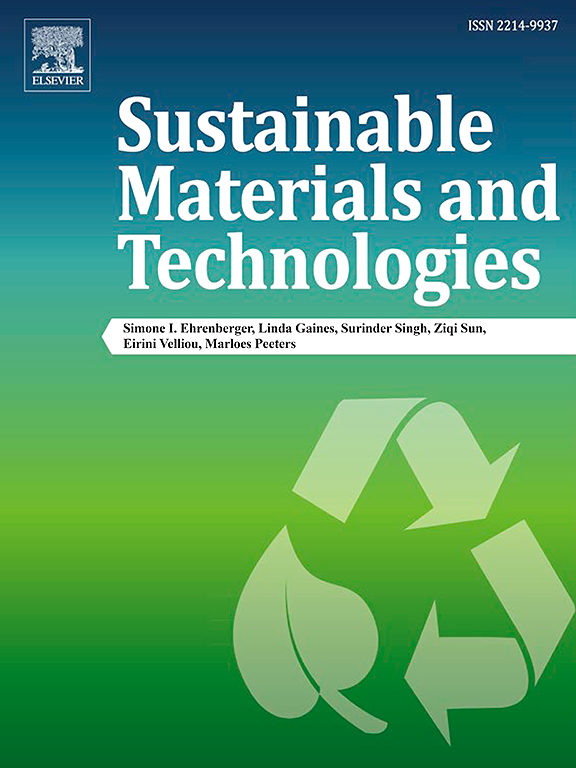Synergetic construction of super-color and low-hydrolysis of reactive dyeing for cotton fiber via a linear silicone medium dyeing system
IF 8.6
2区 工程技术
Q1 ENERGY & FUELS
引用次数: 0
Abstract
Traditional water-based dyeing not only depend on nonrenewable chemicals but also result in secondary environmental pollutions after dyeing, due to the inorganic salts and toxic dye-containing chemicals. In this investigation, we established a salt-free, less-water, and small solid waste dyeing system, evaluating the dyeing performance of three reactive dyes in this linear silicone (LS) dyeing system compared to a traditional water bath. Further investigation was conducted to understand the reasons behind the high fixation rates and deeper color dyeing properties of reactive dyes. These results indicate that reactive dyes can achieve a dye uptake rate exceeding 99 %. Additionally, under the same dye dosage, the dyeing color depth of reactive dyes can be increased by 70 % compared to water dyeing bath. The primary reasons contributing to this phenomenon are the low hydrolysis rate of reactive dyes in the LS dyeing system, the high energy barrier associated with the hydrolysis reaction, and the relatively low energy barrier for the bonding reaction between the dye and the cotton fiber. From the dyeing mechanism of LS dyeing technology, it facilitates the green and low-carbon development of textile dyeing industry, and minimizes pollution while simultaneously addressing the needs of human development.

线性有机硅介质染色体系对棉纤维活性染色的超色低水解协同构建
传统的水基染色不仅依赖于不可再生的化学物质,而且由于无机盐和有毒的含染料化学物质,导致染色后的二次环境污染。在这项研究中,我们建立了一个无盐、少水、小固体废物的染色系统,比较了三种活性染料在该线性有机硅(LS)染色系统中的染色性能,并与传统水浴染色系统进行了比较。进一步研究了活性染料固色率高、染色色深的原因。这些结果表明,活性染料可以达到99%以上的染料吸收率。在相同染料用量下,活性染料的染色深度比水染色浴可提高70%。造成这种现象的主要原因是LS染色体系中活性染料水解率低,水解反应的能垒高,染料与棉纤维成键反应的能垒相对较低。从LS染色技术的染色机理来看,它促进了纺织印染行业的绿色低碳发展,在满足人类发展需求的同时,将污染降到最低。
本文章由计算机程序翻译,如有差异,请以英文原文为准。
求助全文
约1分钟内获得全文
求助全文
来源期刊

Sustainable Materials and Technologies
Energy-Renewable Energy, Sustainability and the Environment
CiteScore
13.40
自引率
4.20%
发文量
158
审稿时长
45 days
期刊介绍:
Sustainable Materials and Technologies (SM&T), an international, cross-disciplinary, fully open access journal published by Elsevier, focuses on original full-length research articles and reviews. It covers applied or fundamental science of nano-, micro-, meso-, and macro-scale aspects of materials and technologies for sustainable development. SM&T gives special attention to contributions that bridge the knowledge gap between materials and system designs.
 求助内容:
求助内容: 应助结果提醒方式:
应助结果提醒方式:


